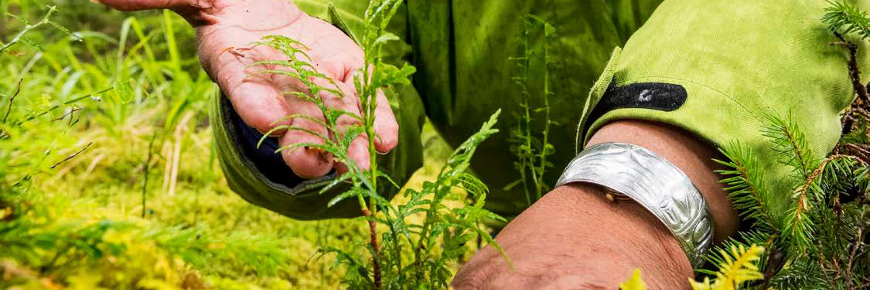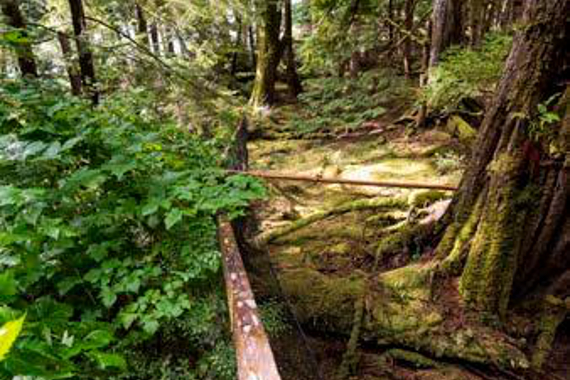
Llgaay gwii sdiihlda, or restoring balance
Eradicating invasive deer in Gwaii Haanas National Marine Conservation Area Reserve and Haida Heritage Site
What’s the issue?

Sitka black-tailed deer look harmless enough. But those in Gwaii Haanas National Park Reserve and Haida Heritage Site are invasive and they’ve left waves of cultural and ecological impacts in their wake. The deer were introduced from Alaska in the late 1800s. Excellent swimmers, they migrated to several islands in Gwaii Haanas archipelago. With no natural predators to keep them in check, the deer have browsed their way through intertidal and forest ecosystems, eating nearly all plants within their reach. The effects have been widespread: the Haida people have been deprived of many important plants for medicine, food and building materials, including t’suu (cedar) and ts’iihlinjaaw (devil’s club), while native wildlife – from birds to beetles – have had essential habitats eliminated.
What’s our approach?
- Collaborate with the Haida Nation and external experts to develop an eradication plan.
- Gather baseline information to measure the environmental response after deer removal.
- Use eradication techniques to remove all deer from five islands (Ramsay, Bischofs, House, Hotspring and Murchison).
- Garner support from the local community; provide as much harvested meat as possible to the local community.
- Teach Canadians and visitors about the profound effects invasive deer have on cultural and ecological diversity.
What’s been accomplished?
- Prepared and launched a comprehensive eradication plan.
- Collected two years of baseline information to evaluate forest recovery.
- Removed deer from all target islands; observed a noticeable increase in cultural plants and other vegetation in 2017.
- Delivered more than 635 kilograms of meat through the Local Foods to School and Meals on Wheels programs.
- Fenced out deer in study areas to show community members and visitors how swiftly important plants can recover.
- Built capacity at Parks Canada and among local biologists in effective eradication techniques and advanced marksmanship; supported prevention, early detection and rapid response if needed in future.
Related links
- Igniting restoration
- Two pines in decline
- Conserving an alpine enigma
- Rescue the fescue
- Historic homecoming
- Wildlife crossings
- Going with the flow
- Propagating success
- Listening to the sea, looking to the future
- Ecosystem on the edge
- Keeping dunes dynamic
- Wild about wolves
- Restoring kelp in Gwaii Haanas National Marine Conservation...
- Date modified :